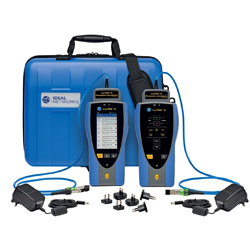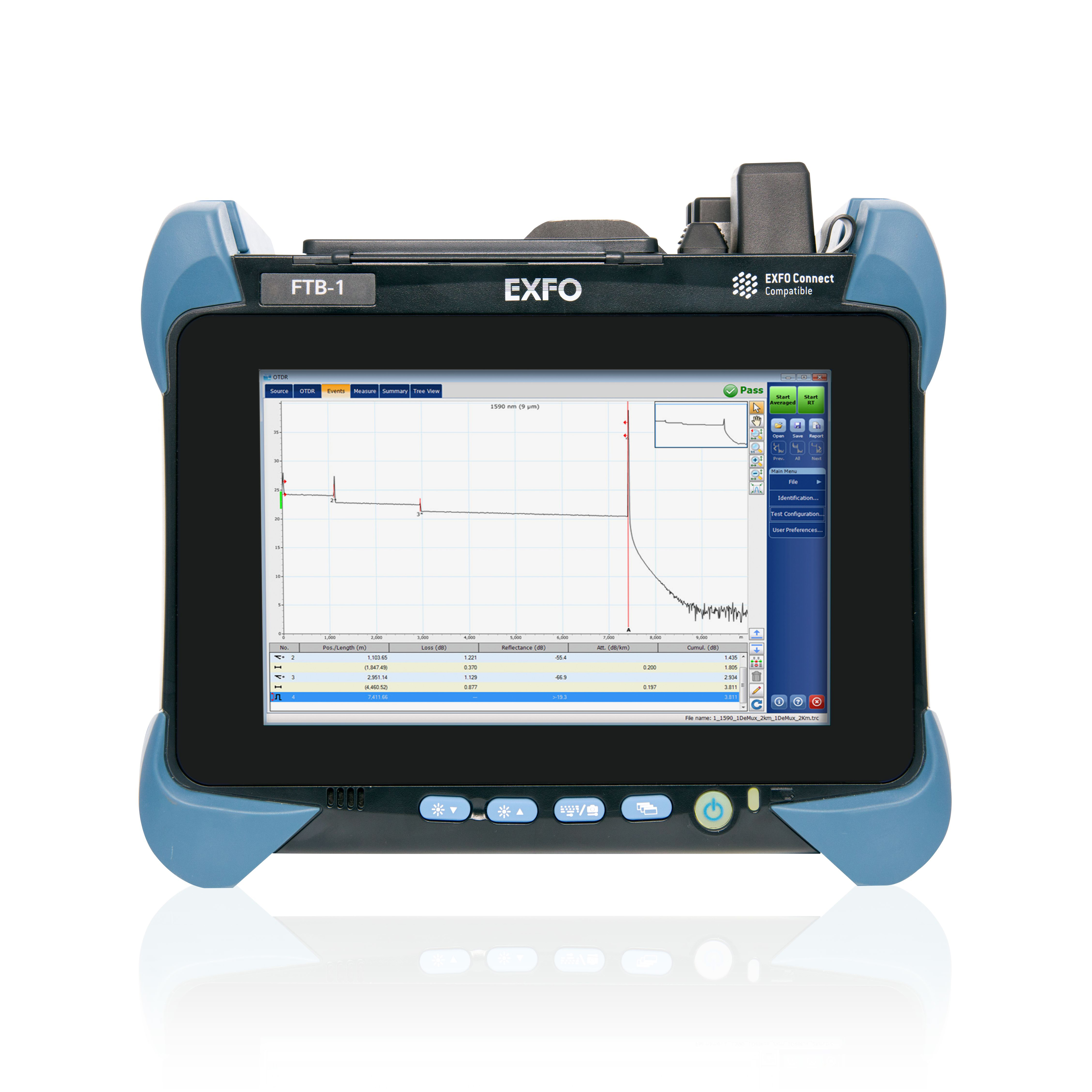10 Critical gains of using fiber measurement for material consistency
A Comprehensive Guide to Optical Measurement System for Fiber Evaluation
When it comes to fiber analysis, comprehending optical dimension systems is important for reviewing performance and making certain top quality. You'll explore necessary methods like interferometry and spectroscopy, which aid you gauge key criteria. But there's more to it than just these techniques; mastering attenuation dimension methods can greatly affect your network's performance. As you browse through this guide, you'll uncover insights that can change your technique to optical fiber.
Comprehending Optical Measurement Systems
When you explore optical measurement systems, you'll discover they're crucial for evaluating fibers with precision. These systems use light to assess different attributes of fibers, including diameter, refractive index, and uniformity. By employing methods like interferometry and spectroscopy, you can acquire valuable understandings into the fiber's properties.You'll discover that these systems are made to decrease mistakes and improve precision, making certain dependable data for your analysis. Various arrangements, such as single-mode and multi-mode systems, accommodate certain fiber kinds, allowing you to select the finest fit for your needs.Moreover, the integration of sophisticated software devices helps you analyze the data successfully, making it less complicated to identify any kind of incongruities or flaws. As you examine deeper into these measurement systems, you'll appreciate exactly how they simplify the analytical procedure and enhance the overall high quality of fiber manufacturing and testing.
Key Criteria for Fiber Evaluation
Secret parameters for fiber evaluation play an important function in identifying the quality and efficiency of fiber optics. When you assess a fiber, you'll wish to concentrate on characteristics such as attenuation, data transfer, and modal dispersion. Attenuation gauges the loss of signal strength as light journeys via the fiber. A reduced depletion value suggests much better high quality and longer transmission distances - fiber measurement.Bandwidth refers to the data-carrying capacity of the fiber and is crucial for high-speed interaction. You'll need to analyze the bandwidth to ensure it meets your application demands. Modal dispersion, which emerges from the various rates at which light trips via various modes in multimode fibers, impacts signal clearness
Techniques for Attenuation Measurement

Transmission capacity and Its Influence On Performance
Recognizing bandwidth is vital for maximizing fiber performance, as it directly influences the quantity of data that can be sent over a network. Greater data transfer suggests you can send even more details simultaneously, permitting faster communication and better overall efficiency. When you're working with fiber optics, it's vital to take right into account exactly how data transfer communicates with fiber qualities, such as core dimension and product properties.If the bandwidth is limited, you may experience data loss or slower speeds, impacting your applications. In addition, various kinds of fibers can support varying transmission capacity degrees, so it is necessary to choose the appropriate fiber for your certain needs.You need to additionally remember that environmental elements, like temperature level and external disturbance, can affect data transfer. By understanding these aspects, you can make informed decisions to improve your fiber optic systems, ensuring reliable and effective information transmission.
Refractive Index Measurement Techniques

Total Internal Representation
Complete internal representation (TIR) acts as an essential concept for determining the refractive index of fibers. When light trips from a denser medium to a much less thick one, it can only be completely shown if the angle of occurrence goes beyond a particular threshold, referred to as the crucial angle. This sensation allows you to figure out the refractive index top article by examining the angles at which light shows or refracts. By utilizing a configuration that routes light into a fiber and determines the resulting angles, you can determine the refractive index accurately. Recognizing TIR not only boosts your fiber analysis but additionally enhances the layout and efficiency of optical systems. So, leveraging TIR can cause extra efficient fiber-based applications.
Interferometric Techniques
Structure on the concepts of overall interior reflection, interferometric methods supply an effective methods for gauging the refractive index of fibers with high precision. These methods make use of the interference patterns produced when light beams split and recombine after taking a trip different courses. You can use configurations like the Michelson or Mach-Zehnder interferometer to examine phase shifts brought on by changes in refractive index. By thoroughly calibrating your system and analyzing the resulting edges, you can determine the refractive index with amazing precision. It's crucial to maintain stable ecological conditions to reduce mistakes. With these strategies, you'll boost your understanding of fiber residential properties, causing much better performance in various applications, from telecommunications to sensor technology.
Modal Diffusion and Its Significance
Modal Web Site dispersion describes the dispersing of light pulses as they take a trip through a fiber, which can influence the overall efficiency of the system. You'll see that this sensation can lead to indicate distortion, influencing data transmission rates and top quality. Recognizing its importance is necessary for maximizing fiber optic designs.
Interpretation of Modal Diffusion
In optical fiber communications, modal diffusion plays a significant role in figuring out signal top quality and transmission rate. It occurs when different light settings take a trip at varying rates via the fiber. Given that each mode has distinct paths and qualities, they can reach the getting end at different times. This moment difference can bring about signify dispersing and distortion, which can degrade the general efficiency of the interaction system. You could come across modal diffusion mainly in multimode fibers, where the numerous paths of light intensify the problem. Recognizing modal dispersion is important for optimizing fiber designs and guaranteeing that your communication systems run successfully, preserving the honesty of the transmitted signals over longer distances.
Results on Fiber Efficiency
Understanding modal dispersion helps highlight its effects on fiber efficiency. This phenomenon occurs when different modes of light traveling at differing speeds within the fiber, resulting in signal spreading with time. As you evaluate fiber optics, you'll observe that enhanced modal diffusion can greatly degrade signal top quality, causing reduced data transfer and longer transmission distances. In sensible terms, this implies your data can arrive distorted or postponed, impacting overall interaction performance. To reduce these impacts, you could consider using single-mode fibers, which minimize modal diffusion. By choosing the ideal fiber kind and comprehending exactly how modal diffusion influences performance, you can improve transmission high quality and warranty dependable data transfer in your optical dimension systems.
Devices and Technologies for Optical Measurements
When it concerns optical dimensions, a number of innovative tools and innovations go to your disposal to boost fiber evaluation. You'll locate fiber click this site optic testers, which assess signal top quality and efficiency, vital for preserving perfect network efficiency. Optical time-domain reflectometers (OTDRs) are crucial for situating mistakes and gauging loss over ranges, supplying thorough insights right into fiber honesty. Additionally, spectrometers can examine light spectra, aiding you recognize product residential properties and composition.Don' t overlook the relevance of imaging systems, like digital microscopes, that allow you to aesthetically inspect fiber surface areas for defects. Additionally, think about utilizing polarization analyzers to measure stress and stress in fibers, which is important for recognizing their habits under various problems. By leveraging these devices and technologies, you can considerably enhance your fiber analysis processes, ensuring integrity and high efficiency in your optical networks.
Frequently Asked Questions
What Are the Prices Connected With Optical Measurement Equipments?
The expenses connected with optical measurement systems can differ significantly. You'll need to assess equipment costs, upkeep fees, software application licenses, and potential training costs. Budgeting thoroughly will assist you stay clear of unanticipated monetary challenges down the line.

How Commonly Should Fiber Analysis Be Executed?
You must execute fiber analysis on a regular basis, commonly every six months or after significant modifications in the atmosphere (fiber measurement). This assures optimal performance and helps identify potential issues prior to they influence your system's performance and reliability
Can Optical Measurement Systems Be Calibrated in your home?
Yes, you can calibrate optical dimension systems in your home, yet it requires accuracy. Ensure you follow the manufacturer's guidelines, make use of appropriate calibration standards, and double-check your results to ensure precision in your measurements.
What Industries Frequently Utilize Optical Measurement Systems?
You'll discover optical measurement systems commonly utilized in sectors such as telecommunications, manufacturing, healthcare, and study. They're necessary for quality assurance, fiber evaluation, and making certain precise dimensions in different applications, improving effectiveness and precision throughout sectors.
Are There Any Security Interest In Optical Measurement Systems?
Yes, there are security issues with optical dimension systems. You must always use safety eyewear to shield your eyes from intense source of lights and warranty correct training to handle equipment securely and avoid crashes.